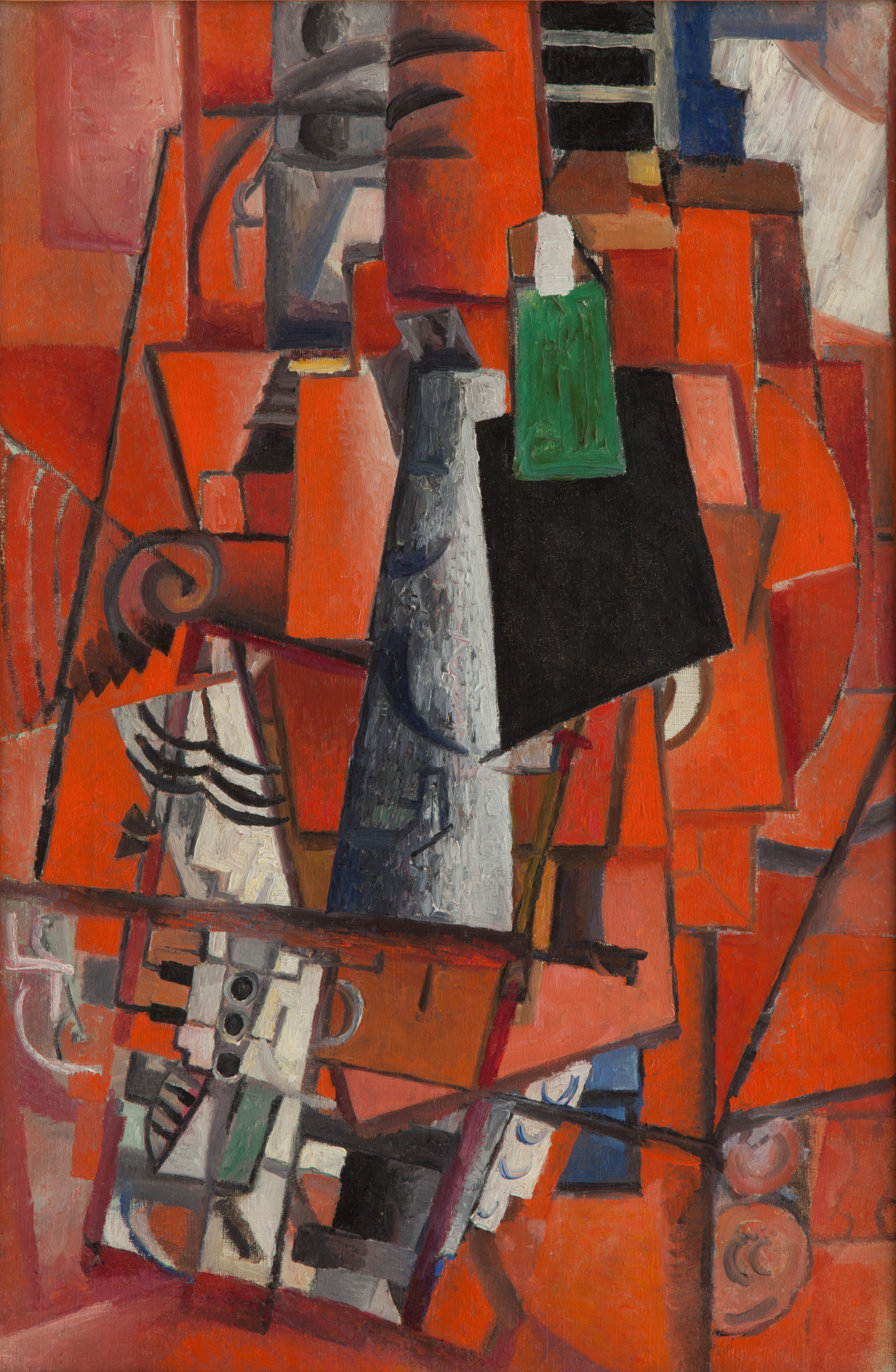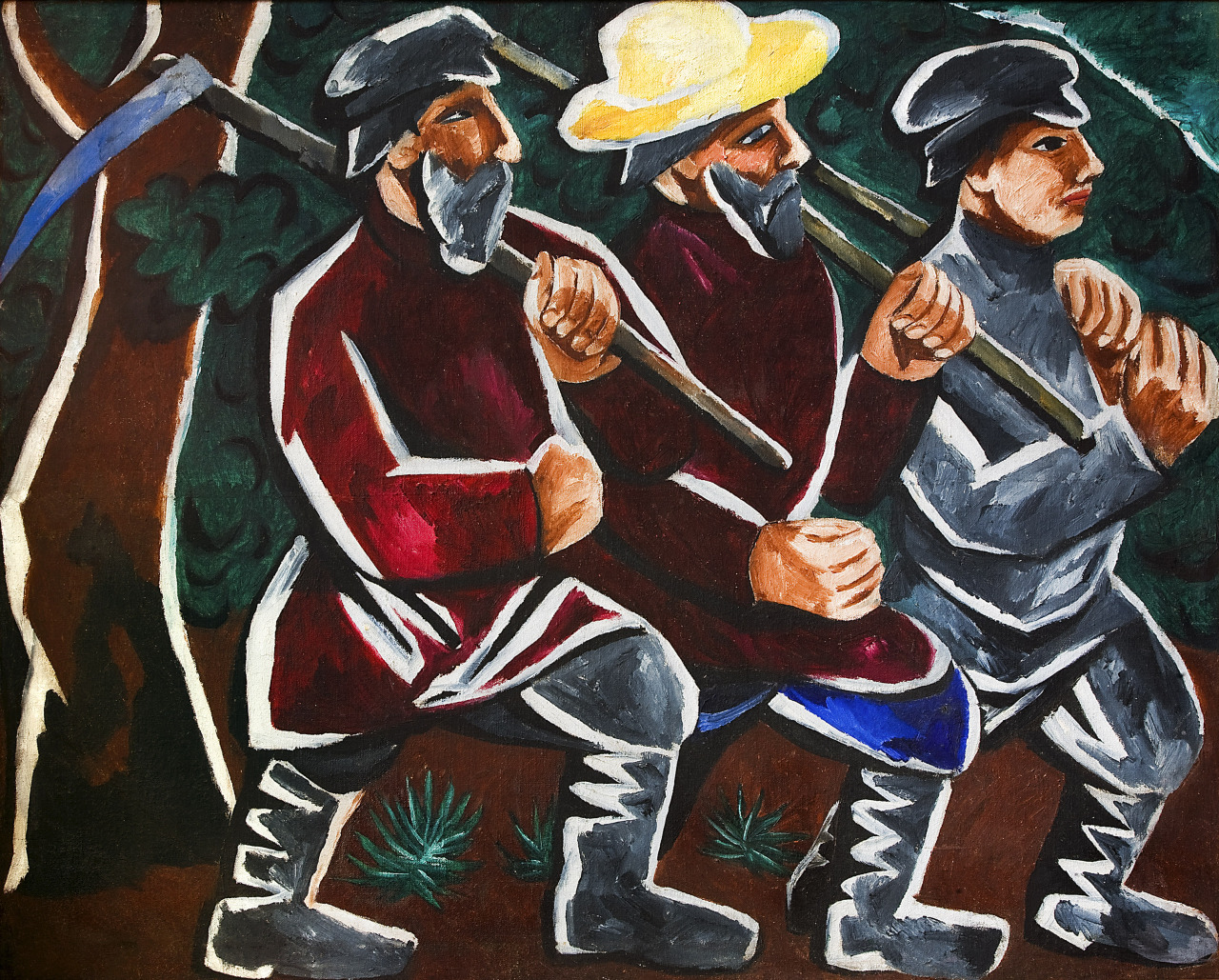Masterpieces by pioneers of Russian avant-garde art shown in Seoul
By Park YunaPublished : Jan. 18, 2022 - 16:17

Russian avant-garde modern art started to flourish in the early 20th century with artists beginning to explore new abstract styles, rejecting conventional academic tradition in the aftermath of the Russian Revolution in 1917 that overthrew the Russian Empire.
While the avant-garde artists -- most famously Wassily Kandinsky and Kazimir Malevich -- are widely known today, many of them were oppressed in the 1930s after Stalin, who stigmatized their works, took power. Many artists fled to Europe and remained ignored in Western art history due to the Cold War that stretched from 1947 to 1989.
The exhibition “Kandinsky, Malevich and the Russian Avant-Garde: Revolutionary Art” at Sejong Museum of Art brings together 75 paintings by 49 Russian avant-garde artists, including those who remained relatively unknown in South Korea. The works are majorly from the collection of the Ekaterinburg Museum of Fine Arts, the largest art museum in the Urals region of Russia.
While the avant-garde artists -- most famously Wassily Kandinsky and Kazimir Malevich -- are widely known today, many of them were oppressed in the 1930s after Stalin, who stigmatized their works, took power. Many artists fled to Europe and remained ignored in Western art history due to the Cold War that stretched from 1947 to 1989.
The exhibition “Kandinsky, Malevich and the Russian Avant-Garde: Revolutionary Art” at Sejong Museum of Art brings together 75 paintings by 49 Russian avant-garde artists, including those who remained relatively unknown in South Korea. The works are majorly from the collection of the Ekaterinburg Museum of Fine Arts, the largest art museum in the Urals region of Russia.

"Russian avant-garde art was politically shunned at the time but was reborn as minimal art after 50 years. The art avant-garde movement also influenced Korean abstract art, such as the ‘dansaekhwa movement,’” said Kim Young-ho, a professor at Chungang University who directed the exhibition.
The exhibition starts with “Wassily Kandinsky’s Improvisations,” showing Kandinsky’s works from the improvisation series produced in 1909, 1913 and 1917 that feature more simplified forms and bolder and sensuous colors. The first session is followed by “Absolutism of Kazimir Malevich,” which guides through Malevich’s absolutism that rejected painting as a means of representing objects with an attempt at extreme geometrical simplification.
The exhibition also shows works by artist and photographer Alexander Rodchenko, one of the founders of constructivism and Russian design who died in 1956, and Mikhail Larionov, an avant-garde artist who pioneered abstract Russian art working with radical exhibitors. Larionov‘s series of Venus paintings in 1912 are on display at “Mikahil Larionov’s Venus.”
Natalia Goncharova was among female artists at the forefront during the Russian Revolution, pioneering a new form of Russian art as an early leader of the Russian avant-garde. Goncharova was inspired by native Russian art forms such as lubok, Russian popular print derived from literature, religious stories and popular tales.
The exhibition kicked off on Dec. 31 and will run through April 17 at Sejong Museum of Art in Seoul. The museum is open every day from 10:30 a.m. to 7:30 p.m.
The exhibition starts with “Wassily Kandinsky’s Improvisations,” showing Kandinsky’s works from the improvisation series produced in 1909, 1913 and 1917 that feature more simplified forms and bolder and sensuous colors. The first session is followed by “Absolutism of Kazimir Malevich,” which guides through Malevich’s absolutism that rejected painting as a means of representing objects with an attempt at extreme geometrical simplification.
The exhibition also shows works by artist and photographer Alexander Rodchenko, one of the founders of constructivism and Russian design who died in 1956, and Mikhail Larionov, an avant-garde artist who pioneered abstract Russian art working with radical exhibitors. Larionov‘s series of Venus paintings in 1912 are on display at “Mikahil Larionov’s Venus.”
Natalia Goncharova was among female artists at the forefront during the Russian Revolution, pioneering a new form of Russian art as an early leader of the Russian avant-garde. Goncharova was inspired by native Russian art forms such as lubok, Russian popular print derived from literature, religious stories and popular tales.
The exhibition kicked off on Dec. 31 and will run through April 17 at Sejong Museum of Art in Seoul. The museum is open every day from 10:30 a.m. to 7:30 p.m.







![[Graphic News] More Koreans say they plan long-distance trips this year](http://res.heraldm.com/phpwas/restmb_idxmake.php?idx=644&simg=/content/image/2024/04/17/20240417050828_0.gif&u=)
![[KH Explains] Hyundai's full hybrid edge to pay off amid slow transition to pure EVs](http://res.heraldm.com/phpwas/restmb_idxmake.php?idx=644&simg=/content/image/2024/04/18/20240418050645_0.jpg&u=20240419100350)






![[From the Scene] Monks, Buddhists hail return of remains of Buddhas](http://res.heraldm.com/phpwas/restmb_idxmake.php?idx=652&simg=/content/image/2024/04/19/20240419050617_0.jpg&u=20240419175937)

![[KH Explains] Hyundai's full hybrid edge to pay off amid slow transition to pure EVs](http://res.heraldm.com/phpwas/restmb_idxmake.php?idx=652&simg=/content/image/2024/04/18/20240418050645_0.jpg&u=20240419100350)

![[Today’s K-pop] Illit drops debut single remix](http://res.heraldm.com/phpwas/restmb_idxmake.php?idx=642&simg=/content/image/2024/04/19/20240419050612_0.jpg&u=)